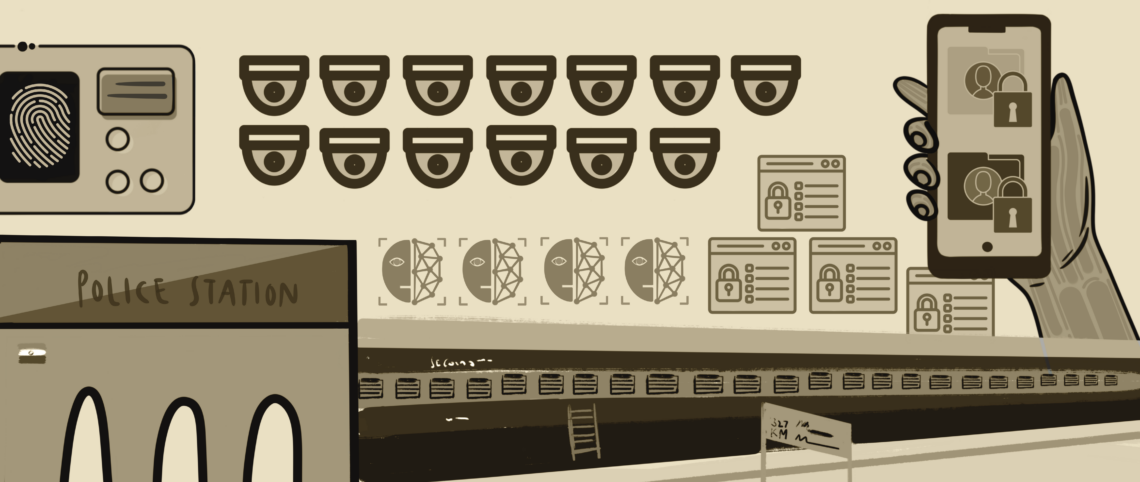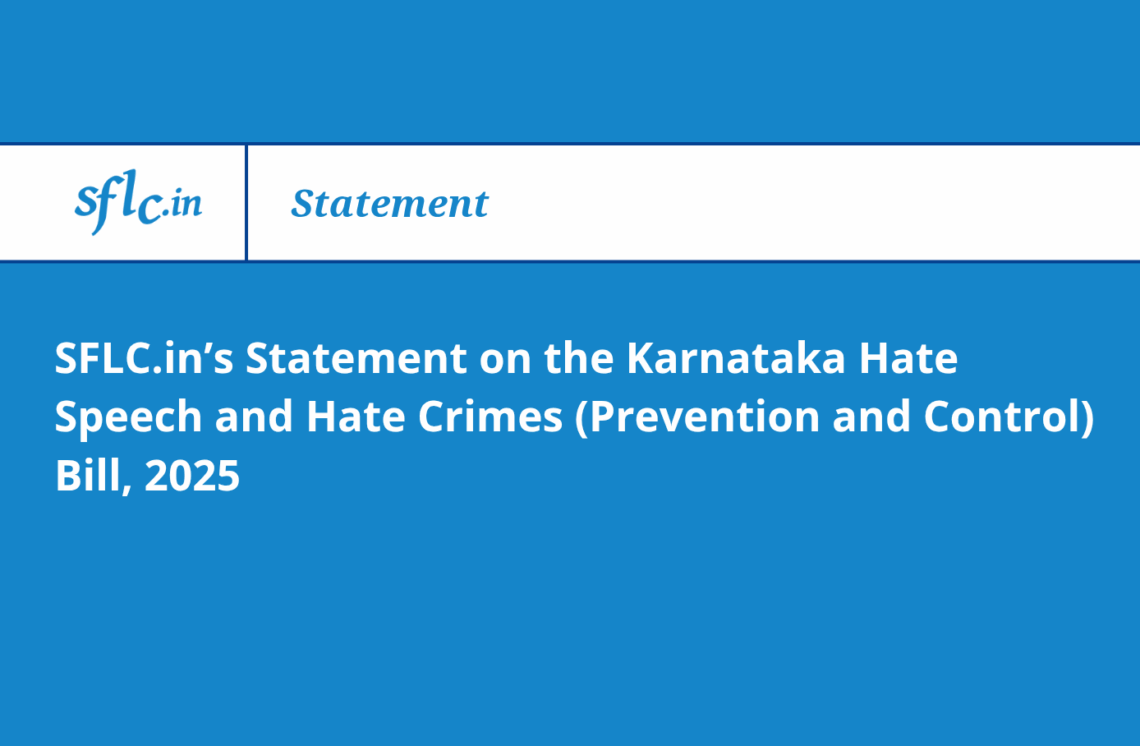In an era where technological advancements are rapidly reshaping our societies, the deployment of facial recognition technology has emerged as an increasingly prevalent tool in state surveillance practices around the world. The large and diverse population along with a complex socio-political landscape has posed a unique set of challenges to tech-enabled state-surveillance India. The widespread deployment of CCTV cameras powered by artificial intelligence, deep learning programming and advanced facial recognition technologies (FRT) has raised important questions regarding privacy, civil liberties, and the balance between security and individual rights.
India has increasingly embraced the implementation of facial recognition systems in surveillance technology, with 126 FRT systems deployed throughout the country, as of June 2023, with a spending of INR 1,499.41 crores.11 Such systems go beyond solely mapping data points on a person’s face, but also their body language and gait, emotions and predicting their future moves. However, as the deployment of facial recognition CCTV cameras expands across India, concerns regarding privacy, data protection, and potential abuse of power have come to the forefront.
Such widespread surveillance infringes upon fundamental rights, erodes personal privacy, and threatens individual autonomy, especially in the absence of any legislation, regulations or guidelines on data protection and privacy. Ultimately no structure or authority exists to curb the State’s power to deploy such invasive technologies pervasively and no mechanism to conduct checks and balances. The unregulated and unbridled use of facial recognition technology by government agencies raises questions about the transparency and accountability of surveillance practices, the storage and handling of collected data, and the potential for misuse or unauthorized access to sensitive personal information.
This article delves into the contentious issue of state surveillance in India through facial recognition CCTV cameras. It aims to provide a comprehensive examination of the multifaceted dimensions, implications, and challenges associated with the widespread use of this technology across various sectors, including law enforcement, transportation, public spaces, and government institutions. The next article in this two-part series will analyze the FRT-enabled surveillance landscape in India and identify the three stages where regulatory intervention is necessary: the development stage of the software and hardware, its implementation and deployment, and the existing legislation and regulation.
Integration of Facial Recognition Technology (FRT) Across Various Sectors
Facial recognition systems have emerged as an extremely valuable tool for law enforcement agencies and, in certain limited instances, made the process of criminal detection more efficient and effective. Such systems are administered through CCTV cameras functioning on machine learning and artificial intelligence, body cameras worn by police officers, drone cameras used in high-risk areas, and several other ways. The deployment of such technology is concentrated in public areas of high traffic and footfall, such as bus stations, railway stations, public marketspaces, stadiums, etc. Once these facial recognition systems catch a recording of a person’s face, through computer vision programming, they collect data points and create a facial data map, which is distinct and unique to each person.2 This is then cross-referenced with the digitized database of criminal records maintained by the State, through which individual criminal records can be retrieved.
In India, the data collected from facial recognition systems are connected with the Ministry of Home Affairs and National Crime Records Bureau (NCRB)’s Crime and Criminal Tracking Network and Systems (CCTNS), which is a comprehensive and integrated database of criminal records and crime statistics across the country.3 This interlinking assists in increasing the efficiency and efficacy of policing by creating a nationwide infrastructure to access criminal data, as it integrates approximately 15,000 police stations across the country. Below are a few instances where such technology has been deployed in India.
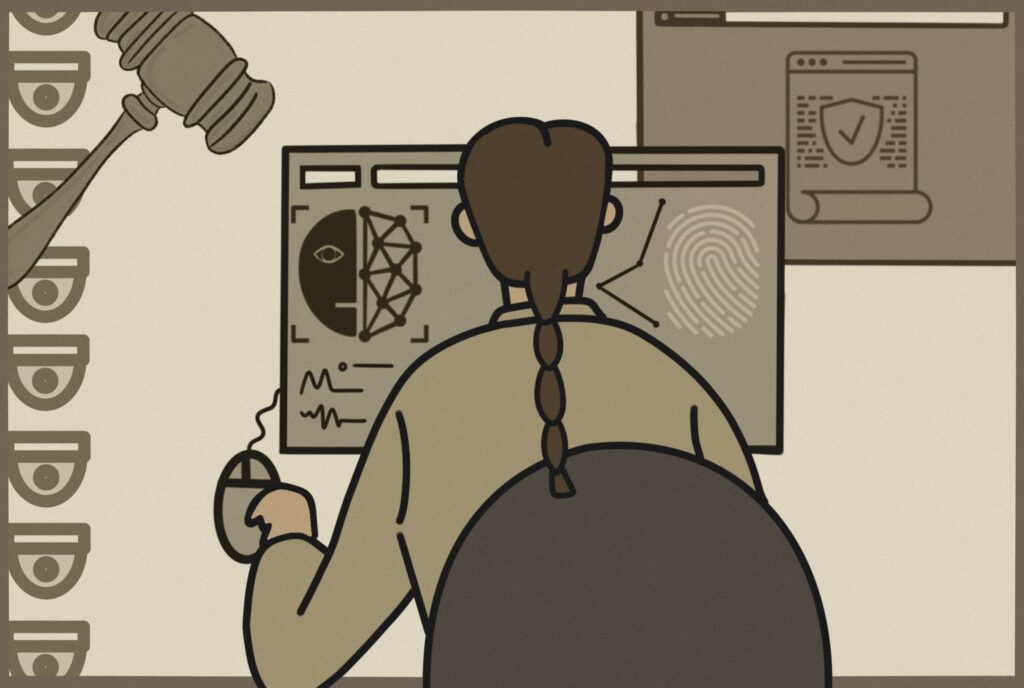
Defence Research & Development Organization (DRDO)
One of the most forward-looking and innovative FRT systems is deployed in a scalable manner by the Defence Research & Development Organization (DRDO) under the Ministry of Defence. These systems are based on machine learning which allows them to detect faces in low-resolution camera feeds and patchy visuals. It is branded as a ‘Face Recognition System under Disguise’ (FRSD) as it identifies faces under disguised physical appearances, such as wigs, masks, beards, sunglasses, hats, headscarves, etc. reportedly with ‘unmatchable accuracy’.4 It is also able to filter out different lighting conditions, shadows on faces, crowd occlusions, etc. and provides ancillary services like people counting, geo-fencing, fire detection and collision detection. It has been programmed in a manner to function with limited human intervention and in the absence of internet connectivity, to ensure continuous and uninterrupted surveillance in conflict areas and high-security zones. Based on the success of such systems in the DRDO, the Ministry plans on soon extending such facial recognition systems to the Indian Army.5
Delhi Police
The Delhi Police’s use of the Automated Facial Recognition System (AFRS) to maintain a dataset of facial data of select protestors tops the list of eye-opening FRT systems in India. It was employed for the first time at the Prime Minister’s rally in New Delhi in December 20196, with the intent of taking action against protestors raising slogans or banners against the Prime Minister. Each attendee to the rally had to pass a facial recognition screening, which sent a live feed of their facial data to a control room. To further detect anti-social elements, this system was adopted in Srinagar by the Municipal Corporation.7 The set-up skips the need to share images or footage with forensics departments to detect and confirm identities as it is programmed with deep learning technology, allowing it to identify and recognize alleged criminals, extract their existing criminal records and alert the local police on its own. This has assisted the Municipal Corporation in pre-empting and preventing terrorist activities and serves as a model system for conflict and disturbed areas.
Maharashtra Police
The Maharashtra Police has taken this a step further by collating facial data with digital fingerprints, palm prints and iris scans to aid police investigations. This has been done to develop the existing database with facial scans of criminals to maintain a more holistic profile. In association with the NCRB, they have developed an Automated Multi-modal Biometric Identification System (AMBIS).8 This functions as a one-place search for all sensitive biometric data of a criminal due to its high level of integration with the Crime and Criminal Tracking Network and Systems (CCTNS) portal, Prism Programme, State CCTV network and the National Automated Fingerprint Identification System (NAFIS). This database would be accessible by all police stations, investigation agencies, commissioners, and district headquarters, along with forensic centres such as fingerprint bureaus, training centres and central prisons.
Government of Andhra Pradesh
A unique and advanced approach has been adopted by the Andhra Pradesh government which equipped its police officers with smart glasses, that can recognize 15 faces in a frame per second.9 The glasses are linked with the State’s data servers and in the absence of any cloud connectivity can recognize up to 10 lakh faces. The CCTV cameras installed around the city can initiate searches based on photos uploaded from newspapers, images in the public domain and even artist sketches of suspects. Law enforcement agents would be equipped with hand-held mobile devices allowing them to record or capture faces and perform a search for it instantly in the national database. As stated by the Police, its primary use is to identify Naxals and terrorists across the State.10
Government of Uttar Pradesh
The ‘Trinetra’ application allows law enforcement agencies in UP to access the digitized and centralized State criminal record database. Its peculiarity is that it functions on sketch-based search technologies by using machine learning processes to draw analyses, patterns, inferences and deductions on criminal activities. It currently maintains profiles with complete criminal records on 5,11,000 criminals accessible to 1470 police stations across 70 districts of the state. This platform is used to identify unidentified and unclaimed dead bodies. However, in Lucknow, AI-enabled cameras can capture more intrusive data reference points through FRT. The police have deployed a facial emotion recognition system to identify ‘women in distress’, click their pictures and inform the local police department. Announcing this measure as a part of Mission Shakti, its purpose was to heighten security measures to reduce crimes against women in Lucknow. It has presently been deployed in 200 spots across the city where the ‘movement of girls is the maximum’ and the rate of crimes against women is the highest.11
In addition to these, FRT systems for state surveillance have been deployed in Surat12, Vadodara13, Madurai14, Varanasi15, Kolkata16, across the State of Punjab17, and several other instances.
Under the Railway Board’s Nirbhaya Fund, Video Surveillance Systems (VSS) has been set up in 983 stations, for which a budget of INR 250 crores has been allocated. In association with RailTel, a Miniratna PSU within the Ministry of Railways, these systems are equipped with facial recognition and video analytics technology. The first railway station to adopt the VSS software in India was KSR Railway Station in Bengaluru by the South Western Railways (SWR), to “identify any criminals entering the railway stations with the help of advanced artificial intelligence”.18 Under the system, the footfall of 2.5 lakh people that the station witnesses daily is now exposed to 157 cameras.
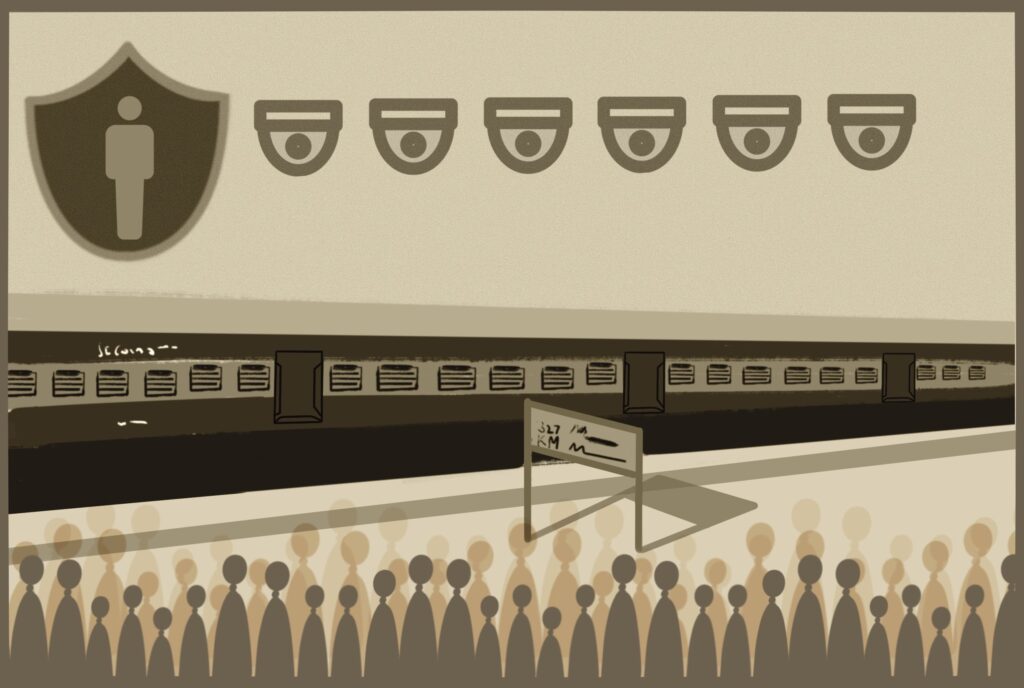
Criminals would be identified by cross-referencing the data collected by the FRT-enabled CCTV cameras with the criminal database maintained by the Government Railway Police. The test runs for the KSR Station were conducted in the presence of senior railway officers by the SWR Security Team demonstrating “100% acquisition of faces with 100% matching with accuracy” from May-Sept 2019. The Chief Public Relations Officer, SWR, E Vijaya, claimed that the system only compares the faces of criminals and missing persons and alerts law enforcement agencies if they match. However, no clarifications have been provided on whether pre-set filters have been placed to recognize non-criminals.
Due to its widespread acceptance and reported success, it has been similarly adopted in the Begumpet railway station in Hyderabad, to be used for abandoned/lost object detection, managing overcrowding and ensuring strict security.19 Further in Vishakhapatnam, FRT systems have assisted in avoiding overcrowding and stampedes in railway stations by regulating the high inflow of crowds. This led to the launch of ‘Operation Nanhe Farishte’, which assists law enforcement agencies in identifying missing children and cracking down on human trafficking rings in railway stations. In the year 2021 alone, the Railway Police Force rescued 603 boys and 368 girls from railway stations.20 The DARPAN system adopted in Telangana, takes this further by matching the facial data collected of missing children at railway stations with their photographs found at various child homes and care centres across the country.21
India’s largest biometric smart city roll-out was witnessed in Gurugram where 1200 CCTV cameras powered by FRT-enabled AI were installed at 200 locations across the city, in consultation with the Haryana Police. It aimed to serve the purposes of detecting violations of traffic rules, such as skipping signals, overspeeding, identifying faulty/prohibited number plates on vehicles, and spotting crime suspects. Initiated by Gurugram Metropolitan Development Authority (GMDA), the data collected would be stored and processed at GMDA’s Integrated Command and Control Center (ICCC) for it to be utilized by the police and other law enforcement agencies.
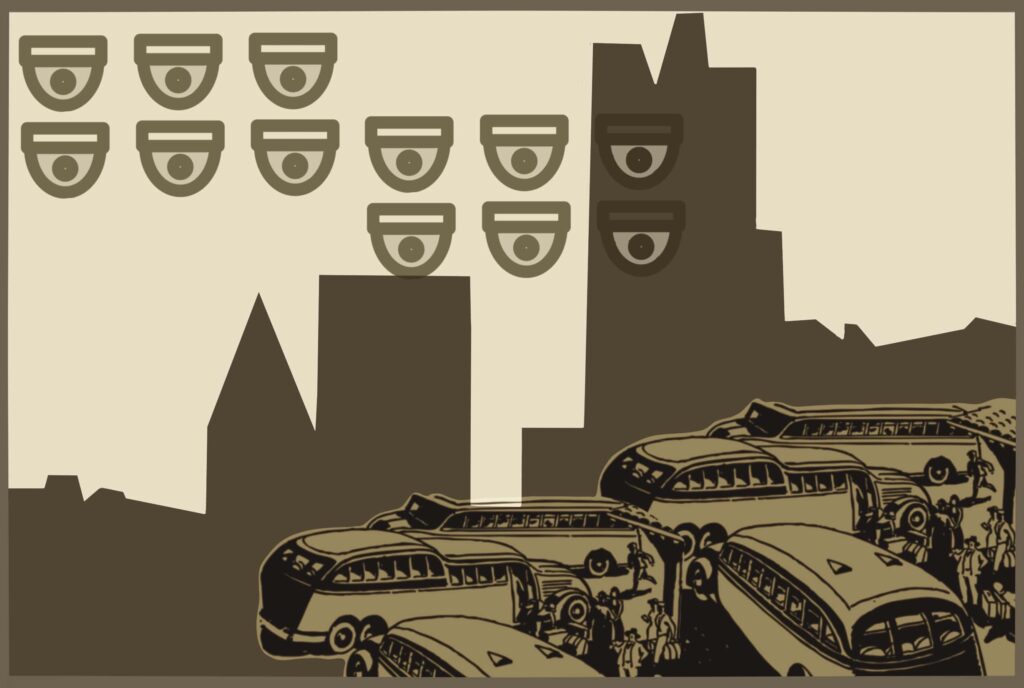
Following this, the Odisha Government, in association with Rourkela Smart City Limited, has adopted a similar program in Rourkela where internet protocol (IP) CCTV cameras will be able to maintain a biometric database of 10,000 faces, which is expected to be scaled up to one million faces.22 It has been implemented with the idea of ‘tracking people’, recognizing patterns of demonstration in crowds, restricting access of people in prohibited areas, detecting abandoned objects, tracking vehicle movement, loitering detection, threat detection and forensic analytics. These systems are advanced enough to detect faces and capture data from several vantage points at varying angles, to reconstruct facial data through partial faces and weather changes. The Odisha Government plans to extend this to the Automatic Fingerprint Identification System (AFIS).
Another instance of vehicular traffic management through FRT-enabled surveillance technology is the widespread drone deployment in Bangalore.23 Its primary objective is to tackle its infamous road congestion and assist the police to divert traffic and allow for the free flow of vehicles. Similarly in Panaji, CCTV cameras have been installed across the city for automated traffic violation detection systems, real-time GPS monitoring of all police vehicles, online e-challan systems, and emergency panic buttons for real-time crime detection, management and response measures.24
FRT is transforming transportation in India by offering contactless experiences to travellers. By leveraging the power of biometrics, it is being integrated into transportation infrastructure to provide a quicker, seamless and paperless experience for passengers. This enhances convenience, improves crowd management, and identifies potential safety threats. The implementation of facial recognition technology in transportation brings numerous benefits by enhancing efficiency through reducing manual processes, minimizing human errors, and speeding up passenger flows.
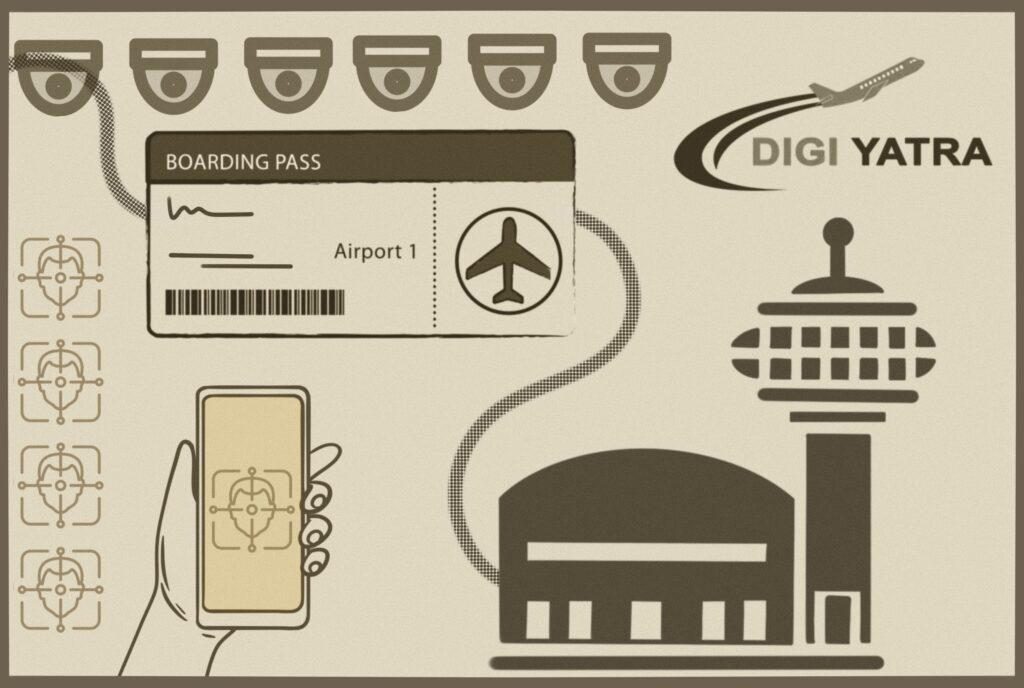
A prime example of this in effect is Digi Yatra, a seamless experience offered to air travellers. Functioning on an identity-verification system using facial recognition, it makes the process of admitting passengers into airports, check-ins, security clearance and boarding a more efficient and less time-consuming process.25 This overcomes the need to verify a flight ticket and ID at multiple points, eliminating the need for physical documentation and minimizing the hassle associated with conventional manual verification procedures. Digi Yatra extends beyond the airport premise by integrating multiple stakeholders, including airlines, airports, and government agencies, to facilitate a comprehensive digital ecosystem. Passengers can receive real-time notifications regarding flight updates, gate changes, and baggage information on their mobile devices.
The program also aims to incorporate services like e-boarding passes, e-baggage tags, and seamless transfers between different modes of transport. The heap of sensitive personal data collected through Digi Yatra is regulated by individual airport operators, not the Ministry of Civil Aviation and is not stored in servers operated, managed and controlled by the State, but in an encrypted format in the wallets of passengers’ smartphones.26 As of June 2023, the platform has witnessed 1 million registrations, owing to its widespread adoption.27
A similar service at a smaller scale has been adopted for a test run by the Bangalore Metro Rail Corporation Limited, in collaboration with Google and Honeywell Automation India Limited, to allow seamless movement for pass-holders to avoid long queues in Bangalore Metro.28 This will implement a person’s face to be used as their metro card as Automatic Fare Collection (AFC) gates would be operated with AI and FRT systems to scan a passenger’s face. However, limited developments have been made so far and the project has not been implemented on a mass scale.29
CCTV cameras enabled with FRT serve as a workforce management solution to track the movement of employees in a workspace. This monitoring system ensures attendance, timeliness and diligence amongst its members to promote transparent workspaces, replacing the need for biometric fingerprint scanning to record attendance. It has been adopted widely by the public sector in India, such as the District and Sessions Courts30 along with the High Court in Karnataka, Indian Oil, National Thermal Power Corporation Limited (NTPCL)31, Defence Research & Development Organization (DRDO)32 and National Highways Authority of India (NHAI)33, to name a few.
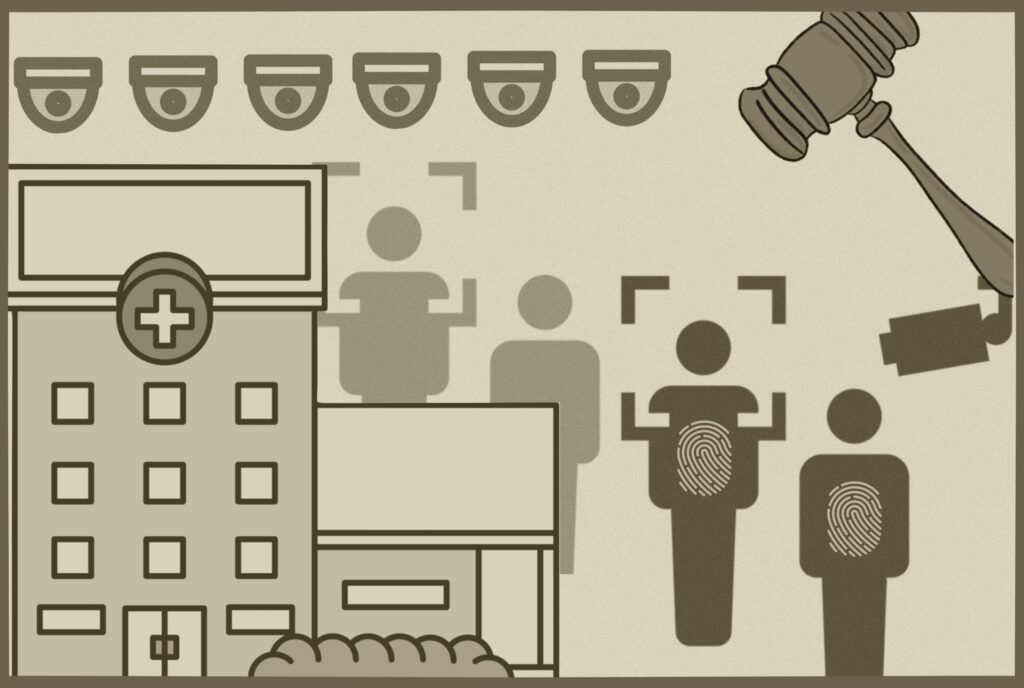
The use of facial recognition-based attendance systems has been protested against by the Andhra Pradesh Government Doctors Association (APGDA) due to technical issues with its implementation.34 The system required them to ensure their attendance multiple times a day, which proved to be highly inefficient and unreasonable standards determined by the government to meet 100% compliance with the facial recognition system. Further, as per reports, these systems can be highly intrusive with a real-time geolocation monitoring feature, to map the movement of their personnel.35 Hence, it doesn’t merely function as an attendance monitoring system, but also a movement tracking system as it extends to creating route maps of their movement throughout the day. A similar backlash was witnessed in Patna at the Patna Medical College and Hospital (PMCH).36
Beyond this, such surveillance systems were adopted in several public schools to mark the attendance of students and faculties, most notably in Chennai where Face Recognitions Attendance Systems (FRAS) functioned without any internet connection or a high computing platform.37 Additionally, Nagaland had implemented FRT to strictly monitor teacher attendance in all public schools.38 In Delhi, app-based school attendance marking infrastructure was implemented in the absence of any privacy policy.39
For a disbursing authority to provide a pension to any pensioner, they are required to prove that they are still alive. The onset of Covid-19 made this an issue, especially for pensioners in rural areas. The Ministry of Personnel, Public Grievances and Pensions allowed pensioners easy, secure and hassle-free access to their pension.40 They were able to upload their real-time photographs through a platform that was verified through the government’s biometric and identity authentication database.
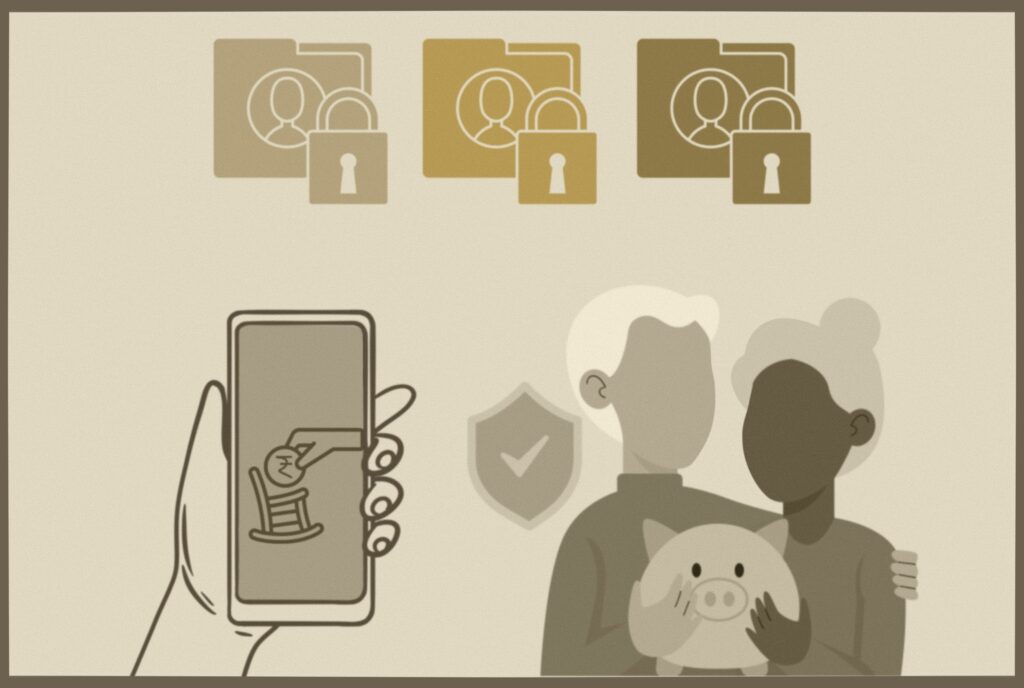
In the next post of this two-part series, we will be analysing the multiple layers where regulatory intervention is required in the deployment of facial recognition technology for public services in India: the development of the software and hardware, its implementation and deployment, and the existing legislation and regulation. The post will critique and assess how the lack of rights-respecting regulations leads to privacy and bias concerns and how stronger legislation, transparency in the technology, and enforcement of ethical standards in the domain can balance innovation with individual rights.
Footnotes
- Shyam Nandan Upadhyay, Meet the Facial Recognition Giant Helping Bengaluru Police, ANALYTICS INDIA MAG (Mar 28, 2023). ↩︎
- Afzal Godil, Sandy Ressler and Patrick Grother, Face Recognition using 3D Facial Shape and Color Map Information, NAT. INS. OF STANDARD AND TECH. ↩︎
- Crime and Criminal Tracking Network & Systems (CCTNS), NATIONAL CRIME RECORDS BUREAU, MINISTRY OF HOME AFFAIRS (2021). ↩︎
- AI in Defence, MINISTRY OF DEFENCE (2022). ↩︎
- Supra ↩︎
- Delhi Police Is Now Using Facial Recognition Software to Screen ‘Habitual Protestors’, THE WIRE (Dec 29th, 2019), ↩︎
- Kamaljit Kaur Sandhu, J&K Police steps up effort to get facial recognition technology in Srinagar to track down terrorists, INDIA TODAY (Oct. 21st, 2021). ↩︎
- Nadeem Inamdar, Maharashtra Police Launch New Tech To Help Check Crimes, HINDUSTAN TIMES (May 15th, 2022). ↩︎
- Syed Ahemed, Andhra Pradesh Govt Plans to Adopt AI-Driven ‘Smart Glasses’ with Facial Recognition to Fight Crime, NEWS18 (Nov 22nd, 2019). ↩︎
- Supra ↩︎
- Smart cameras to be set up in Lucknow to track facial expression of women in distress, alert police, SCROLL.IN (Jan 21st, 2021). ↩︎
- Safe City Solution: Surat City Police, NEC (2018). ↩︎
- Vadodara police set to adopt Clear View AI facial recognition app,INDIAN EXPRESS (Feb 28th, 2020). ↩︎
- Cops Use Face Recognition App to Identify Criminals, TIMES OF INDIA (Sep 27th, 2020). ↩︎
- Varsha Rani, Another City Is Using Crime Control as an Excuse for Facial Recognition Surveillance, VICE NEWS (Nov 27th, 2020). ↩︎
- E-Tender for Supply, Installation, Commissioning & Maintenance of Face Recognition System for use of Kolkata Police, KOLKATA POLICE DIRECTORATE (Feb 27th, 2020). ↩︎
- Gopal Sathe, Cops In India Are Using Artificial Intelligence That Can Identify You In a Crowd, HUFFPOST (Aug 16, 2018). ↩︎
- Pilot Project of Face Recognition Software Being Implemented in KSR Bengaluru Station, SOUTH WESTERN RAILWAY (Jan 9th, 2020). ↩︎
- RailTel Corporation of India Ltd. Installs Internet Protocol (IP) Based Video Surveillance System (VSS) at Begumpet Railway Station, RAILTEL. ↩︎
- Operation Nanhe Farishte: 502 Children Rescued in 4 Months from Central Railway Stations, INDIAN EXPRESS (May 13th, 2022). ↩︎
- TS Police ‘Darpan’ Helps Child from UP Reunite with Parents after 5 Years, TELANGANA TODAY (Oct 9th, 2020). ↩︎
- Corrigendum #1 of RFP, ROURKELA SMART CITY LTD. (Jul 12, 2019). ↩︎
- Kiran Parashar, Why are drones at work to study Bengaluru traffic? Here’s what police say, INDIAN EXPRESS (Jun 23rd, 2023). ↩︎
- Surveillance System Commissioned At Last, 382 Cameras Watch Panaji’s Back, TIMES OF INDIA (Apr 22nd, 2023). ↩︎
- Digi Yatra, DELHI INDIRA GANDHI INTERNATIONAL AIRPORT. ↩︎
- Digi Yatra to be Implemented at Kolkata, Pune, Vijayawada and Hyderabad Airports by March 2023, PRESS INFORMATION BUREAU, MINISTRY OF CIVIL AVIATION (Feb 2nd, 2023). ↩︎
- Digi Yatra App User Registration Crosses 1 Million Mark Since its Launch in December 2022, BUSINESS TODAY (Jun 22, 2023). ↩︎
- Yamini C S, Bengaluru: Face recognition tech to replace smart cards at Namma Metro, HINDUSTAN TIMES (May 19th, 2022). ↩︎
- Shyam Nandan Upadhyay, Meet the Facial Recognition Giant Helping Bengaluru Police, ANALYTICS INDIA MAGAZINE (Mar 28th, 2023).
↩︎ - Tender Notification, PROCEEDINGS OF THE PRIL. DISTRICT AND SESSIONS COURT, BAGALKOT (May 5th, 2022). ↩︎
- Tender Status, NTPC LIMITED E-GOVERNANCE PORTAL (2020). ↩︎
- AI-Enabled Face Recognition based Contactless Attendance System, DEFENCE RESEARCH & DEVELOPMENT ORGANIZATION, MINISTRY OF DEFENCE. ↩︎
- RFP Document, NATIONAL HIGHWAYS AUTHORITY OF INDIA. ↩︎
- Sarasvati NT, Andhra Pradesh Doctors Oppose Mandatory Facial Recognition Attendance System In Hospitals, MEDIANAMA (Jan 23, 2023).
↩︎ - NHAI Introduces AI-based Face Recognition System for Attendance Monitoring, ECONOMIC TIMES (Mar 5th, 2021). ↩︎
- VK Tripathi, Patna: Face-based attendance system at PMCH now, TIMES OF INDIA (May 6th, 2022). ↩︎
- TNeGA Launches Face Recognition System for Attendance in Two Chennai Schools, TAMIL NADU E-GOVERNANCE AGENCY, GOVERNMENT OF TAMIL NADU. ↩︎
- Teacher Attendance Monitoring System (TAMS) using Face Recognition, DEPARTMENT OF SCHOOL EDUCATION, GOVERNMENT OF NAGALAND (2022). ↩︎
- Anushka Jain, Delhi’s Teachers Protest, Move Court As Municipal Corporations Push App-Based Attendance Marking Without Privacy Policy, Data Minimisation, MEDIANAMA (Aug 27th, 2021). ↩︎
- Union Minister Dr Jitendra launches unique Face Recognition Technology for Pensioners, PRESS INFORMATION BUREAU, MINISTRY OF PERSONNEL, PUBLIC GRIEVANCES AND PENSIONS (Nov 29th 2021). ↩︎

